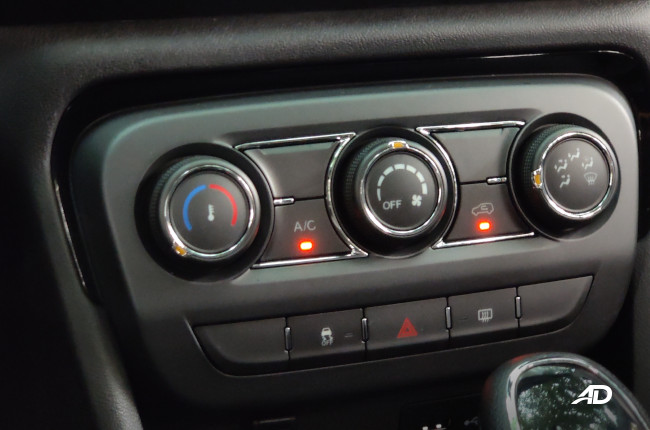
Climate controls are one of the standard features that all vehicles have today. While in the early 70s to the earlier 90s air-conditioning was just an option, however, this feature is now a must-have for the vehicles of today.
Automatic climate controls, often found in more premium vehicles or higher tier variants, can be straightforward or padded with innovation after innovation. Manual climate controls, on the other hand, is the classical approach when it comes to heating or cooling your car.
Automatic climate controls: A more computerized system

Automatic climate controls are the “set it and forget it” method of keeping your cabin cool. All one has to do is set it to the desired temperature and let the computer systems to the rest. Automatic climate controls work by first letting the user set their desired temperature, then it ramps up the air conditioning system to meet the set requirements. It then utilizes sensors that have been placed all around the cabin in order to maintain the specified temperature. The system does this all on its own without the need for human intervention. When the outside temperature gets too hot or too cold and rises or falls below the specified temperature, the climate control system will modify the fan speed and thermostat to adjust accordingly to regain the desired temperature.
As technology has evolved, so too have climate control systems. They have now progressed into zoned systems that use the same technology to heat or cool certain parts of a vehicle. This gives both the driver and passengers the ability to sit comfortably at their own desired temperature.
Climate control systems require more sensors and more technology to operate; these were more commonly found in luxury or higher tier vehicles. As technology has advanced, climate control systems have slowly found their way into more entry-level vehicles giving users a more premium experience. However, these systems were normally relegated to the higher-tier variants giving interested buyers the option to “buy upwards” and aim for a higher trim-level for more convenience. The end result is that those who want this specific feature would have to buy a trim-level higher in order to get it.
Manual Climate controls: Keeping yourself cool the old fashioned way

In its most elementary form, an air conditioning system in a car usually consists of three knobs, the thermostat to control the temperature, one for fan speed, and one to change the airflow.
This lets the user manually set how strong the air conditioning system cools or heats the cabin and set the fan speed all on their own. While there is some guesswork to be done as most air conditioning systems do not come with a digital display, it still works well and reliably. The only downside to manual air conditioning is that there is no automation so you have to do everything yourself.
While simple it is still proven to be effective for cooling your car. Sure, you will have to do everything on your own and you won't get access to zoned-climates, but it gets the job done and it does its job well. The response is also instant instead of waiting for the sensors and computer to kick in for automatic climate control units.
Verdict
It all boils down to personal preference. While automatic climate controls are indeed a nice feature to have as the system does everything for you. It does come at a higher price tag, remember these features normally come with higher tier variants or more premium vehicles, and as such be prepared to fork over a bit more money to get the functionality.
If, however, you don’t mind setting the temperature manually, or you prefer to do so, then getting a vehicle with manual air conditioning controls best suits you. This opens your purchasing options to a wider range of more affordable vehicles, as manual controls are a standard for all vehicles being sold today. With that in mind, you can still treat an automatic system like a manual system, it'll often take a few more steps to get your desired setting.
Latest Features
-
The difference between wax and polish / Tips & Advice
Confused about whether your car needs a wax or polish? This article will guide you on what they are and what to choose for your car.
-
The 6 things every Ford Ranger must pass before it leaves the factory / Featured Article
Every Ford Ranger, from the base model to the Ranger Raptor, goes through a full inspection process before it leaves the factory. This includes six steps that make sure it’s ready to drive a...
-
Which GAC AION EV is best for your everyday lifestyle? / Featured Article
The GAC AION lineup has something for everyone, maybe you're after space, speed, or just a smooth city drive. Here's a quick breakdown of which model might work best for your day-to-day life...
Popular Articles
-
Cheapest cars under P700,000 in the Philippines
Jerome Tresvalles · Sep 02, 2024
-
First car or next car, the Ford EcoSport is a tough package to beat
Jun 18, 2021
-
Car Maintenance checklist and guide – here’s everything you need to know
Earl Lee · Jan 12, 2021
-
Most fuel efficient family cars in the Philippines
Bryan Aaron Rivera · Nov 27, 2020
-
2021 Geely Okavango — Everything you need to know
Joey Deriquito · Nov 19, 2020
-
Family cars in the Philippines with the biggest trunks
Sep 20, 2023
-
Head to head: Toyota Rush vs. Suzuki XL7
Joey Deriquito · Oct 28, 2020
-
Why oil changes are important for your car
Earl Lee · Nov 10, 2020
-
2021 Kia Stonic — What you need to know about it
Joey Deriquito · Oct 16, 2020
-
Top 7 tips for buying a used car in the Philippines
Joey Deriquito · Nov 26, 2020



